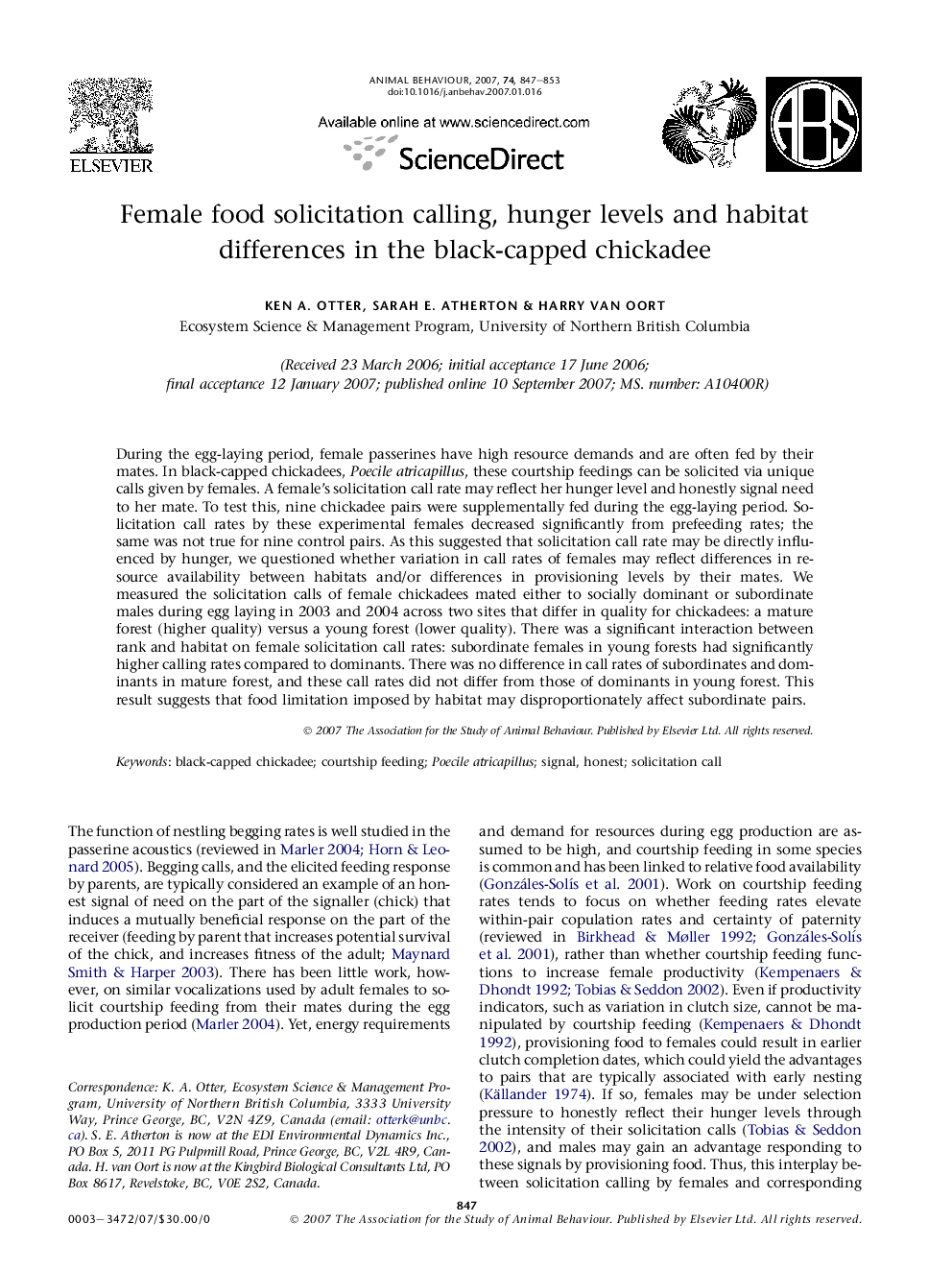| کد مقاله | کد نشریه | سال انتشار | مقاله انگلیسی | نسخه تمام متن |
|---|---|---|---|---|
| 2418229 | 1104341 | 2007 | 7 صفحه PDF | دانلود رایگان |

During the egg-laying period, female passerines have high resource demands and are often fed by their mates. In black-capped chickadees, Poecile atricapillus, these courtship feedings can be solicited via unique calls given by females. A female's solicitation call rate may reflect her hunger level and honestly signal need to her mate. To test this, nine chickadee pairs were supplementally fed during the egg-laying period. Solicitation call rates by these experimental females decreased significantly from prefeeding rates; the same was not true for nine control pairs. As this suggested that solicitation call rate may be directly influenced by hunger, we questioned whether variation in call rates of females may reflect differences in resource availability between habitats and/or differences in provisioning levels by their mates. We measured the solicitation calls of female chickadees mated either to socially dominant or subordinate males during egg laying in 2003 and 2004 across two sites that differ in quality for chickadees: a mature forest (higher quality) versus a young forest (lower quality). There was a significant interaction between rank and habitat on female solicitation call rates: subordinate females in young forests had significantly higher calling rates compared to dominants. There was no difference in call rates of subordinates and dominants in mature forest, and these call rates did not differ from those of dominants in young forest. This result suggests that food limitation imposed by habitat may disproportionately affect subordinate pairs.
Journal: Animal Behaviour - Volume 74, Issue 4, October 2007, Pages 847–853